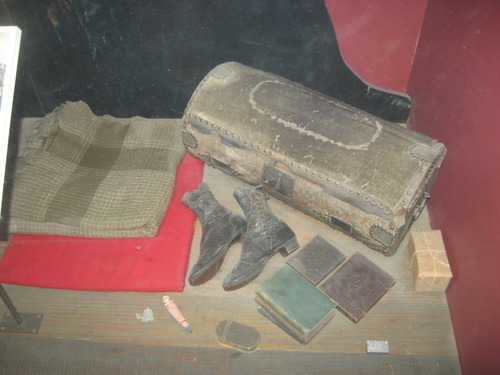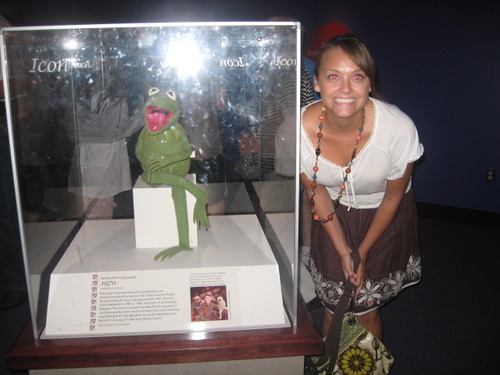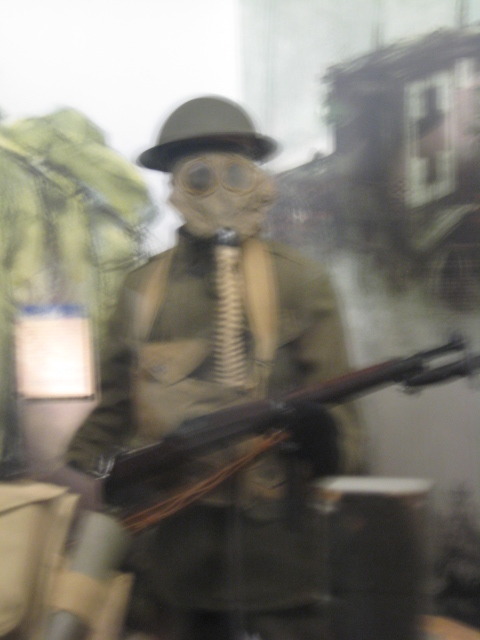My group and I stopped at The “Star-Spangled Banner” exhibit first. The flag made me think about the rationalization behind the museum’s collection. The exhibit’s full title (The Star-Spangled Banner: The Flag That Inspired the National Anthem) tells us that this flag inspired the national anthem. But what of it now? Why do we still keep it, why preserve it for future viewing? (On Hoarders they would ask “do you plan on using it again?”) Though it failed to inspire with me renewed sense of patriotism it did make me think about my Catholic upbringing. Catholics excel at holding on to old things. The museum keeps the flag for the same reason churches have mummified saints (or fingers, jewelry, teeth, cloth, personal items) on display: to inspire the masses and hopefully transfer a spiritual power to the views. i.e. If the flag inspired one person once, we ought to keep it just in case it works again!
Mission
The National Museum of American History’s mission statement reads “The Smithsonian’s National Museum of American History dedicates its collections and scholarship to inspiring a broader understanding of our nation and its many peoples. We create opportunities for learning; stimulate imaginations, and present challenging ideas about our country’s past.” I can’t argue against that, the museum brought me a broader understanding of the nation’s deep attachment to material culture. The museum collects the objects that represent the United States. That is not to say that museum simply collect and display them in glass boxes, there are some exhibits that are fashioned in the 19th century style, and others are modern museum display. The display variety allows the museum to showcase museum history, alongside US material culture.
Favorite
“Communities in a Changing Nation: The Promise of 19th-Century American,” discussed Industrial workers, Jewish Immigrants, and newly freed Black Americans at the turn of the last century. A short display introduced each vignette in the exhibit, explaining what the guests were going to encounter, what they were expected to learn. This exhibit contracts nicely with uncontextualized or lightly contextualized item displays.

This photo illustrates old items in a context and story heavy exhibit. In the photo you see a Jewish immigrant’s trunk, shoes, and books. Though it is possible to display items as they would have looked new, (or lightly used) in the 19th century, the display plays on the authenticity of the collection. The items look 100 years old, because they are. The visible authenticity fosters a relationship with museum guests and the 19th century immigrants. An intimacy only achieved by relative closeness to culturally defined significant objects. Imagine putting those shoes on, would they allow you time travel? Probably not, but I didn’t put them on so maybe. Fostering an intimacy with the past allows modern visitors to place themselves with in a story that, by the existence of the museum itself, is worth telling and saving.
Truthfully, not all guests think about the items in terms of historical significance or their own relationship with the items; however people justify their visit to the museum by citing the collection. “I want to see________.” Lincoln’s hat, Kermit, the First Ladies’ tea sets, Washington’s uniform, Greensboro lunch counter, ect ect. The want to see things “in person” reveals a need to associate with items that carry a larger significance than oneself.

Here i am associating myself with Kermit the frog. Lastly-My disappointment
The World War One vignette in the U.S. war exhibit was painfully small, and under contextualized.

This guy needs more explanation. Why the gas mask? How did this war create the “lost generation?” SO much left!
No comments:
Post a Comment